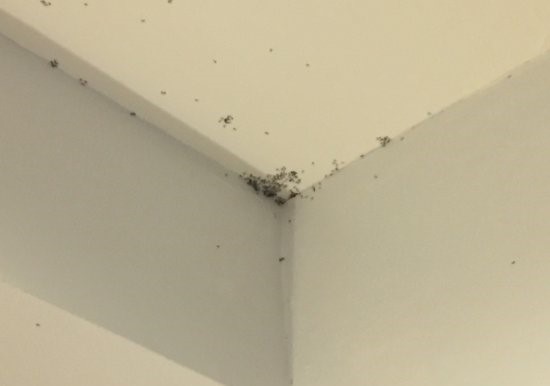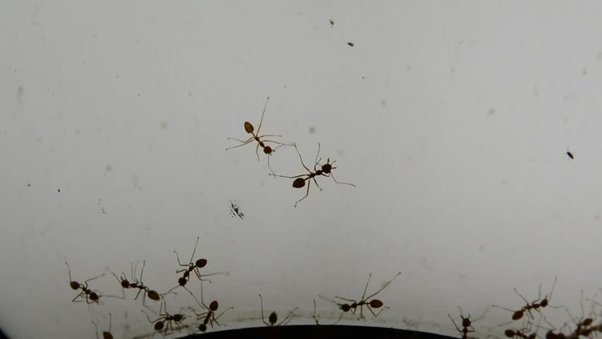Ants on the ceiling can be an unwelcome surprise, leading to questions about their behavior and effective elimination. In this comprehensive guide, we’ll explore the reasons behind “Ants on the Ceiling,” uncover their habits, and delve into proven strategies to rid your living space of these persistent intruders.

Understanding the Phenomenon of Ants on the Ceiling
1. The Puzzling Behavior
The sight of ants on the ceiling can be perplexing, as we often associate ants with ground-level activity. Understanding the reasons behind this behavior requires a closer look at ant species, foraging patterns, and environmental factors that may lead them to explore elevated spaces.
2. Species Specifics
Different ant species exhibit varying behaviors, and some are more inclined to explore vertical surfaces, including ceilings. Carpenter ants, for example, may navigate ceilings while searching for nesting sites or food sources. Identifying the specific ant species is crucial for effective elimination.
Investigating the Causes of Ants on the Ceiling
1. Food Trails and Exploration
Ants are driven by the search for food, and they leave chemical trails to guide other colony members. When exploring new areas, ants may inadvertently find their way onto ceilings, especially if there’s a potential food source in the vicinity. Understanding their foraging patterns can aid in addressing the issue.
2. Nesting and Satellite Colonies
Certain ant species, such as pharaoh ants, are notorious for establishing satellite colonies. These colonies may be situated in various locations, including ceilings. Identifying and addressing nesting sites within the ceiling structure is crucial for long-term ant control.
3. Environmental Factors
Environmental conditions, such as high humidity or water leaks, can attract ants to ceilings. Some species, like moisture-loving odorous house ants, may be drawn to damp areas. Identifying and rectifying these environmental factors is essential for preventing ant infestations on ceilings.
Effective Strategies
1. Targeted Baits and Traps
Deploying ant baits and traps specifically designed for ceiling-level infestations can be highly effective. These products are formulated to attract ants and eliminate them at their source. Placing baits strategically near entry points or along ant trails helps disrupt their foraging patterns.
2. Sealing Entry Points
Preventing ants from reaching the ceiling is a proactive strategy. Seal potential entry points, such as cracks, gaps, or openings around windows and doors. Regularly inspect and maintain these seals to ensure their effectiveness against ant intrusion.
3. Professional Pest Control
For persistent or severe infestations, seeking the assistance of professional pest control services is advisable. Pest control professionals can conduct a thorough inspection, identify nesting sites, and apply targeted treatments to eliminate ants from the ceiling and prevent future infestations.
Read too: Unveiling the Causes and Solutions for the Persistent Issue of “Crack Along Ceiling And Wall” in Your Home
Preventive Measures to Avoid Future Infestations
1. Proper Food Storage
Properly storing food items in sealed containers eliminates potential food sources that attract ants. Clean up crumbs promptly, and avoid leaving food exposed in areas where ants have been observed.
2. Regular Cleaning and Maintenance*
Maintaining a clean living space is a key preventive measure. Regularly clean surfaces, especially in areas prone to ant activity. Addressing spills and maintaining overall cleanliness discourages ant exploration.
Conclusion: Taking Control of Ants on the Ceiling
In conclusion, understanding the reasons behind ants on the ceiling is the first step toward effective elimination. By investigating their behavior, identifying environmental factors, and implementing targeted strategies, you can regain control of your living space. Whether through DIY methods or professional assistance, taking proactive measures ensures a ceiling free from unwanted ant visitors.
